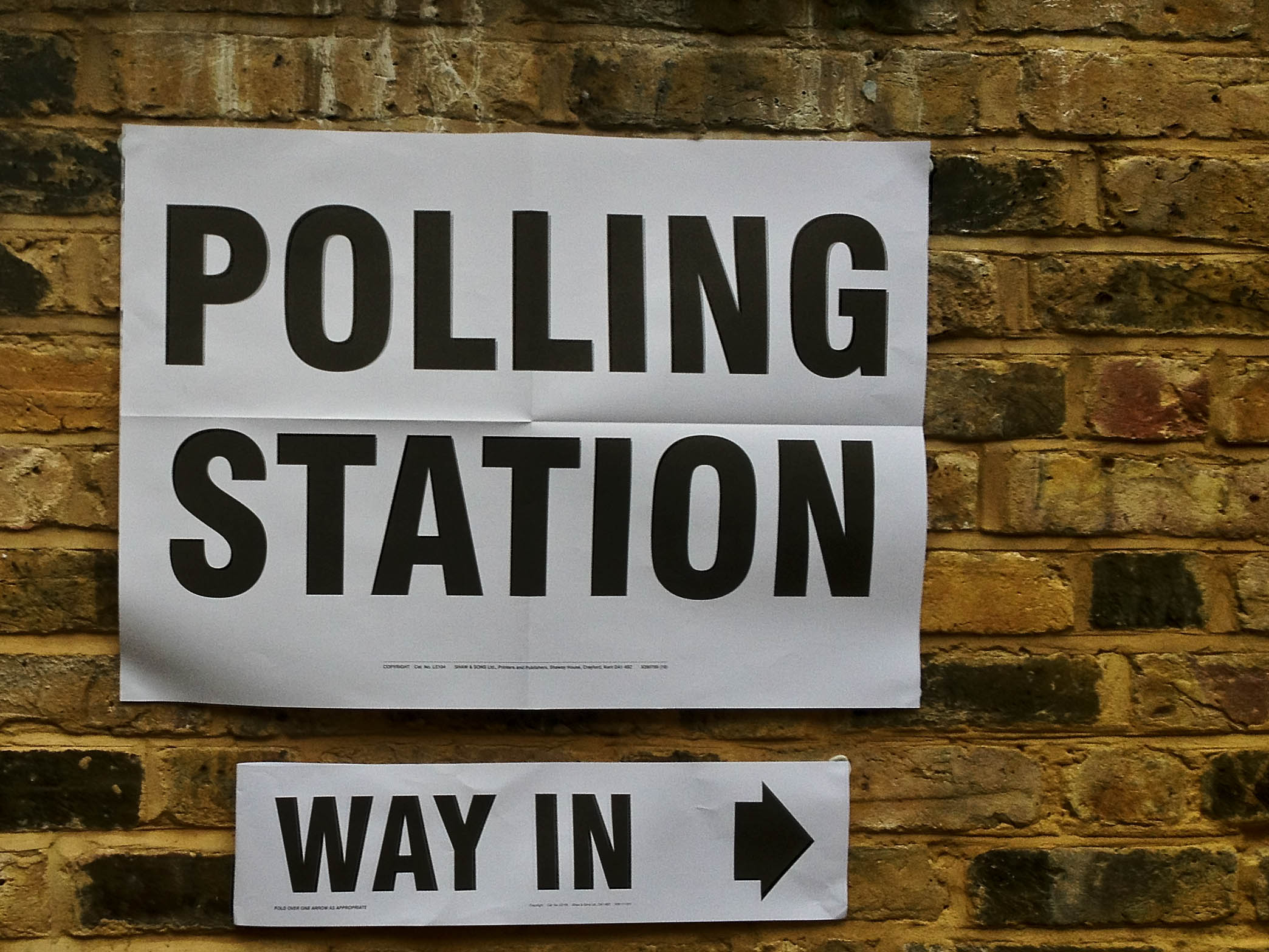 On 3rd May 2018 voters in England will go to the polls in local elections. These elections will decide the make-up of local and borough councils across the UK, as well as some additional direct elections for the Mayoralties of Hackney, Lewisham, Newham, Tower Hamlets and Watford.
On 3rd May 2018 voters in England will go to the polls in local elections. These elections will decide the make-up of local and borough councils across the UK, as well as some additional direct elections for the Mayoralties of Hackney, Lewisham, Newham, Tower Hamlets and Watford.
As the population ages, questions arise over the ability and voting rights of those with age related degenerative mental conditions such as dementia and Alzheimer’s. Formal enquiries to council election teams, and general Google searches about the legal rights of someone with dementia to vote are increasing in number.
A dementia diagnosis does not alter a person’s right to vote. The Mental Capacity Act, which provides a framework for making decisions on behalf of people who lack capacity to make a decision, does not apply to voting. This means that a lack of mental capacity does not stop someone from being able to vote. It is up to the individual to decide if they want to vote. However, challenges can sometimes arise, if for example relatives vote for the individual, rather than on their behalf, voting for who they “think” the individual would have voted for, rather than who the individual themselves have expressed a wish to vote for.
This grey area can sometimes present challenges, especially as often this goes on in private. However, there are steps that can be taken to make voting as transparent as possible, and make the process of voting as accessible as possible for people with dementia (and other disabilities).
Physical adaptations
Physical adaptations can be made to the polling environment to make it more accessible for voters with dementia and Alzheimer’s. While there is a responsibility to make sure that polling stations are accessible to all, some adaptations can sometimes be overlooked, or are not made as obvious as they could be. Making polling stations “dementia friendly” can require just a few short adaptations, including perhaps a specific polling booth which uses labels like “in” and “out” and “pencil” in the booth itself.
Training for polling station staff on understanding how to react to and deal with voters who attend polling stations who have dementia is also seen as very important. In particular, there may be those who may need a carer to enter into the polling station with them. Poll station staff should be able to direct such voters in an appropriate way, regarding how to vote appropriately, especially if there are multiple elections happening on one day, with multiple ballot papers. Polling station staff should also be aware that they are able to help the voter to mark the paper (as the voter chooses) if for some reason they are unable to mark the page or hold the pencil themselves.
Removing additional barriers to voting such as reminding the individual to attend their polling station on the right day, or providing transport for those who are not mobile or do not know how to get to their polling station can also help make the process of voting in person, on the day a more pleasant experience for people suffering from dementia or Alzheimer’s.
Postal or proxy votes: voting remotely from home
Increasing awareness of postal and proxy voting is another way that people with dementia and Alzheimer’s could exercise their right to vote without causing distress or confusion (which can sometimes be instigated by physically attending a polling station).
Postal voting allows the individual to vote from home and submit their ballot (and accompanying postal vote statement) via post. Voting by post can help reduce the potential stresses of an unfamiliar environment like the polling station. A signature is usually required on a postal vote, for security reasons, but if a voter is unable to sign their name, or if their signature varies a lot, then they can ask for a waiver. (If you want to do this, contact your local registration officer and they will help you, usually by sending you a waiver request form.)
A proxy vote allows the voter to nominate another person to vote on their behalf. A proxy does not make the decision about who to vote for on behalf of the person, but rather votes for who they are instructed to vote for by the original voter.
Guidance from the electoral commission has also been issued for Electoral Registration Officers (EROs), with regard to assisted applications to vote, and what can and can’t be done on behalf of a voter. This includes the presumption that a person has capacity. In addition, residents of care homes can be registered to vote by care home managers, who can complete an application for all residents, but again, cannot vote on their behalf (unless they are a registered proxy for the voter).
Challenges and opportunities in the future
Additional challenges could be presented by the development of electronic voting. However, this could also be seen as an opportunity to create a voting system which is actually more straight forward and is easier to navigate for people with multiple disabilities, including dementia.
Estonia has one of the best developed e-voting systems in the world, with voting linked to a national digital ID card which contains photos and digital copies of fingerprints for additional security. The system can make the process of voting clearer, and also make it easier for people with a limited range of movement to vote themselves. However, there are a number of questions which have been raised as to whether this would be a feasible option in Britain.
Some have suggested it would not actually make voting any easier, that it would require a major overhaul of voting systems and the transfer of a lot of data and information, and that, given the recent uncertainty around cyber-attacks, there can be little certainty, with current software, that the process could be completely reliable and secure.
Final thoughts
Many people with dementia still hold strong political feelings, and know their own opinion when it comes to voting for political parties or in a referendum. However, the process of voting can often present them with specific challenges. It is up to local authority teams and their election partners to make the process as transparent and easy for people with dementia and Alzheimer’s as possible. Specific challenges include not spoiling the ballot, and the ability to write/ see the ballot paper and process the information quickly enough.
In 2017 the government launched a Call for Evidence asking for views on how people with disabilities experience registering to vote and voting itself. This included people with dementia and Alzheimer’s, although the results of this are as yet unpublished.
It is clear that, exercising your right to vote is something that should be protected for all citizens, but with the growing challenges raised by an ageing population, the time may be coming for the UK to have a major rethink about how it votes, and what changes could be made to make this easier for people with conditions such as Alzheimer’s and dementia.
Find out more about Idox Elections.
Follow us on Twitter to see what developments in policy and practice are interesting our research team.
If you liked this article, you may also be interested in:
Share
Related Posts
Tackling geographical inequalities is critical for ensuring that all parts of the country have the potential to prosper. When the UK was a member of the European Union, it was entitled to a share of funding from the EU’s structural ....
In recent years, there has been an increasing focus on ensuring people with ‘lived experience’ are involved in co-producing research and policy-making at practical, local level. However, there has been little discussion around what the people with lived experience themselves ....
By Robert Kelk and Chris Drake A new start for an old challenge? The recent appointment of Marc Lemaître as the European Commission’s director general for research and innovation (R&I) has returned Europe’s R&I gap to the spotlight. Previously head ....
Today sees the start of Community Garden Week 2023. Across the UK, communities will be celebrating the many and varied types of community gardens, from children’s and neighbourhood gardens to therapy gardens and allotments. The benefits of community gardens are ....


